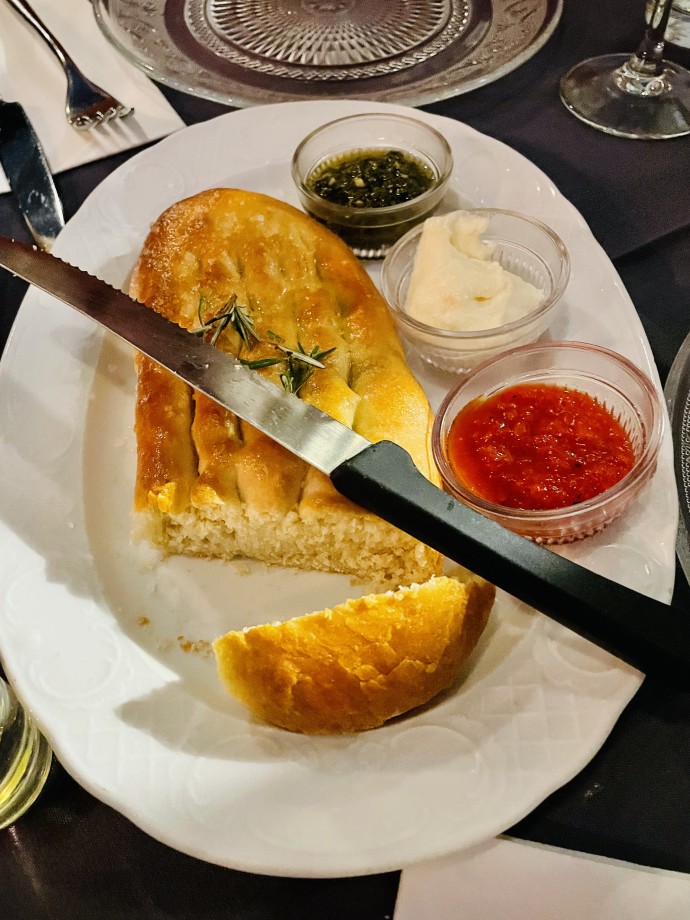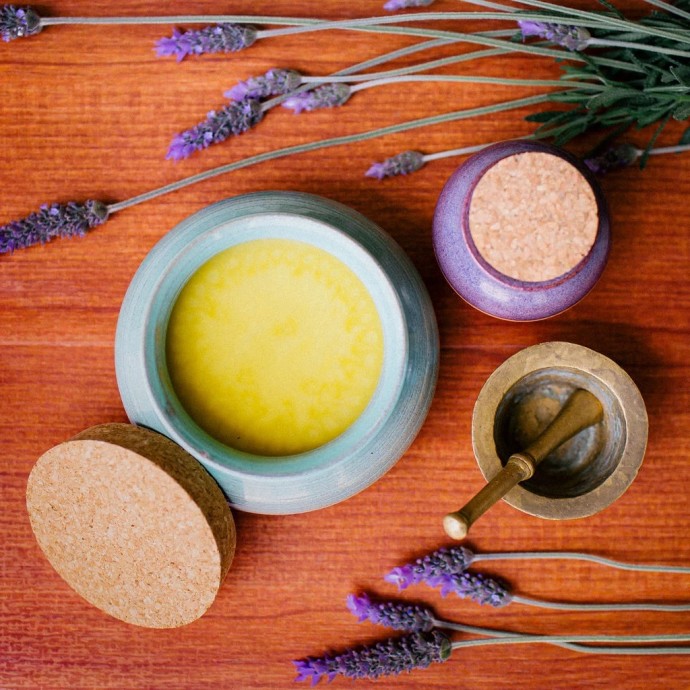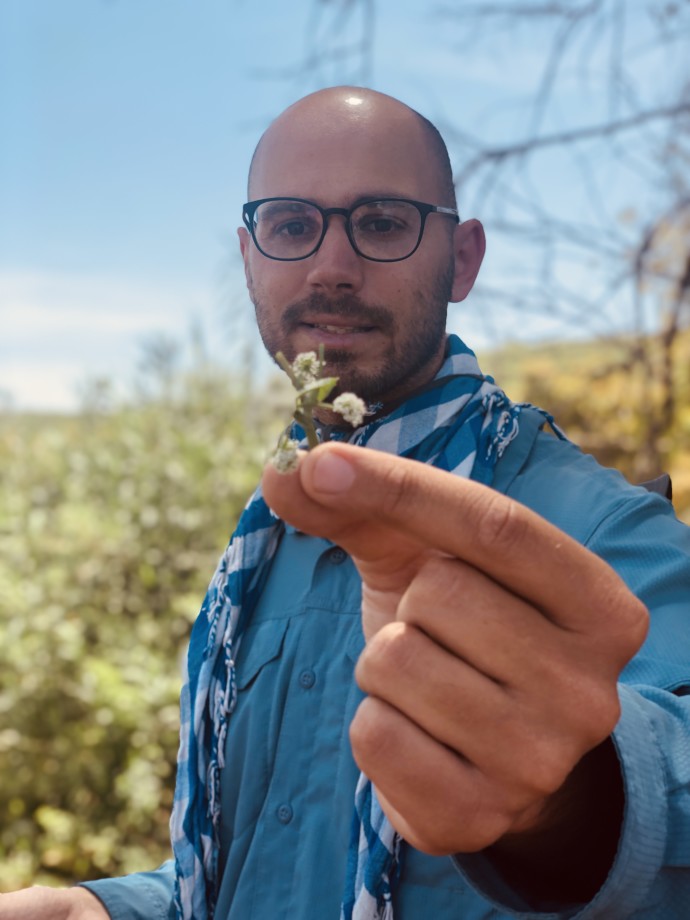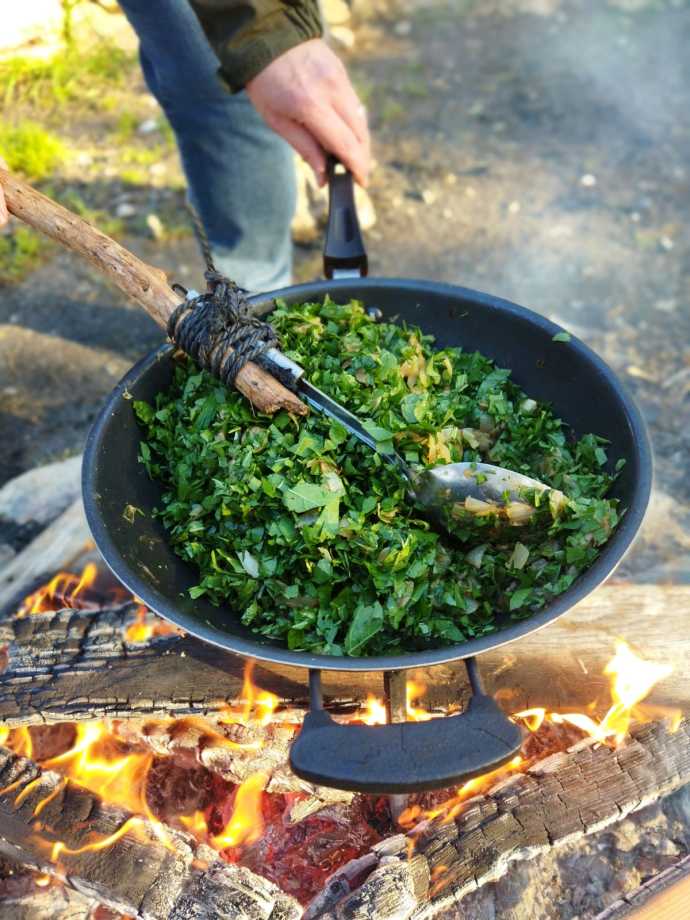In the very beginning – biblical beginnings – God created light, sky, dry land, seas, plants, trees, the sun, moon, stars, sea and flying creatures, land animals, and finally, humans. Herbs and spices were created even before Adam and Eve could enjoy them. According to Genesis 1:29, God gives the pair every seed-bearing plant on the face of the whole earth and every tree that has fruit with seed in it.
“They will be yours for food,” states the Bible.
Indeed, herbs and spices have played an important role for humans since creation – they have historically been used for sustenance, medicine, ointments, oils, offerings and even currency. In Israel, a renewed sense of focus on biblical herbs and spices is connecting God’s people to their land.
Eucalyptus: A Biblical Restaurant
At the Eucalyptus restaurant in Jerusalem, Chef Moshe Basson brings to his customers a modern interpretation of biblical cuisine.
After studying agriculture and becoming a lover of nature, he has become an authority on edible plants indigenous to the region and their culinary uses. The 32-year-old establishment prides itself on preparing and serving traditional foods mentioned in the Bible with a modern Israeli twist. Doing so has gained Basson international notoriety – even by Pope Francis in his new Netflix series "Stories of a Generation," and in the new Artza cookbook, “Tasting Israel: A Cookbook of Food, Family & Faith,” which tells the stories of the Holy Land through 30 Israeli chefs.
“When I’m in the nature I can feel the Bible,” he told The Jerusalem Post.
His restaurant is located just under the ancient walls of Jerusalem’s Old City, with views of the Tower of David.
“It is part of my story – from the dry bones I see sprouting, pushing soil and then the flower," he said.
Though the Bible is not a cookbook, and neither is it a botanical encyclopedia, he explained, “it has a lot of food and processes.”
Basson recalled his own memories seeing a “glowing” plant during his military service in Israel – freekeh (called carmel in ancient Hebrew) – a smoked green wheat, that is referred to in Leviticus 2:14 as an offering that Jewish worshippers brought to the Temple for Shavuot:
And if thou bring a meal-offering of first fruits unto the LORD, thou shalt bring for the meal-offering of thy first-fruits corn in the ear parched with fire, even groats of the fresh ear. (Leviticus 2:14)
Today, at Eucalyptus, Basson’s freekeh risotto features roasted vegetables with the diner’s choice of grilled wild mushrooms, fresh fish or lamb.
Basson also refered to a pesto made with hyssop (za’atar) and served with bread, mentioned in the Bible for its cleansing effect and for digestive and respiratory ailments:
"Purge me with hyssop, and I shall be clean." (Psalms 51:7)
Basson emphasized that biblical food is universal.
In nearly every religion, he said, God creates and humans follow in His image. Basson views culinary creations as his personal, spiritual calling.
“To revive biblically based herbs and ingredients in recipes is, for me, part of my art and part of our natural [way of creating] as people," he told the Post. "In my cooking and food, I bring the bible to life, which truly allows people to walk in the steps of kings and prophets."
Salves of Jerusalem: A Biblical Ointment
Simcha Gluck, another Jerusalemite bringing back biblical herbs, is a chef of sorts as well, cooking up organic herbal salves – rich Galilean wildcrafted beeswax-based ointments – for health, wellness and vitality.
As he creates his Salves of Jerusalem in the neighborhood of Armon Hanetziv, he describes the deep meaning he finds overlooking the Temple Mount, where the Jewish people find closeness to God, as he acts as a “conduit of healing with God’s technology with herbs and essential oils proscribed in the Bible.”
“There is so much divine wisdom, healing and key elements in God’s creations that we can unlock when we want to work on treating, being whole, and balanced,” he told the Post. "I feel like a high priest working in my kitchen.”
In the Bible, Gluck explained, frankincense and myrrh were used for Temple worship, and today, he and his wife Rachel use the herbs for their aromatic balms. Frankincense, he said, is a healing tree sap that has anti-inflammatory and anti-septic properties, while myrrh has been known to kill bacteria.
Frankincense, he maintained, was used as the sole fragrance in the Temple incense offering, which appears in Exodus:
Then the Lord said to Moses, “Take fragrant spices—gum resin, onycha and galbanum—and pure frankincense, all in equal amounts, and make a fragrant blend of incense, the work of a perfumer. It is to be salted and pure and sacred. Grind some of it to powder and place it in front of the ark of the covenant law in the tent of meeting, where I will meet with you. It shall be most holy to you. (Exodus 30:34-36)
The Jewish people and the Temple are also described with these fragrant herbs. Song of Songs Chapter 3:6 refers to myrrh and frankincense, telling how the Jewish people moved through the desert like clouds of myrrh and frankincense:
Who is she that comes up from the desert like columns of smoke, and clouds of myrrh and frankincense, of all the fragrant powders of the merchant? (Song of Songs Chapter 3:6)
Later, the herbs are mentioned as describing the Temple Mount in Song of Songs:
Before the day breaks and the shadows flee, I will make my way to the mountain of myrrh and to the hill of frankincense. (Song of Songs 4:6)
In the Book of Esther, the story of Purim, Queen Esther bathes in myrrh for six months:
"... for so were fulfilled the days of their anointing: six months with oil of myrrh and six months with sweet fragrances..." (Megillat Esther 2:12)
Lastly, cinnamon, which is used in a Salves of Jerusalem lip balm, is described in Song of Songs 4, describing the Jewish people and God in the Garden of Eden:
nard and saffron, calamus and cinnamon, with every kind of incense tree, with myrrh and aloes and all the finest spices.
In addition to being a delicious fragrance, Gluck said, cinnamon boasts quality medicinal elements for gynecology, respiration and blood circulation.
Ofek Ron Carmel: A Biblical Plant Guide
Another individual working to connect people with herbs and spices is Ofek Ron Carmel, a tour guide and photographer located in the north of Israel, who specializes in foraging tours.
“I believe foraging is the best way to connect people to nature," he said. "The more people feel like they can use the edible plants they pick, the more they will feel part of nature and will help to preserve it."
The edible plants he forages for with groups are then used to create a cooked feast in nature – an art that Ron Carmel said many humans have lost but is part of human nature. On his tours, he points out various edible plants that are mentioned in the Bible, such as nettles, hyssop (ezov), duda and mallow.
Nettle, he said, was mentioned in the prophecies of Isaiah as a harmful and bad plant, which will be replaced by the fragrant and good myrtle, signifying the prophecy that the wicked will be lost and the righteous will take power:
Instead of the brier, a cypress shall rise;Instead of the nettle, a myrtle shall rise.These shall stand as a testimony to the LORD,As an everlasting sign that shall not perish. (Isaiah 55:13)
“Today, however, nettle is considered a powerful medicinal plant and a fine, edible plant,” said Ron Carmel. “Nettle is very common in the country, especially in shady soils rich in nitrogen. On top of the leaf and stalk there are hard hairs that are filled with formic acid, and when the hairs break the substance in the contents is inserted into the skin and there is a burning sensation. But you can easily pick the nettle if you hold it in the direction of growth of the prickly hairs – then you do not get a burn. It is recommended to combine the nettle in soups, stews, vegetable patties and more. After cooking or frying there is no burning from the plant."
The Ezov (za’atar or hyssop) is a spice and medicinal plant grown in many places in Israel that is mentioned in the Bible 10 times as a weed that was an ingredient in many purity rituals, and to fumigate rooms where sick people or lepers were staying. It was also featured in the story of Passover when God asks the children of Israel to dye their lintels red with blood using hyssop as a paint brush, so the angel of death would “pass over” the Jews, sparing the life of the first born during the plague in Egypt:
Take a bunch of hyssop, dip it in the blood that is in the basin, and apply some of the blood that is in the basin to the lintel and to the two doorposts. None of you shall go outside the door of your house until morning. (Exodus 12: 22)
The medical duda (mandrake), mentioned in the Bible twice in the context of fertility and its wonderful scent, is common in oak groves in the north of Israel.
“The only part that can be eaten is the orange fruit that grows above the rosette of leaves… Indeed, whoever takes the fruit and puts it in a jar at home, will get the smell of heaven,” Ron Carmel told the Post.
The mandrakes yield their fragrance,At our doors are all choice fruits;Both freshly picked and long-storedHave I kept, my beloved, for you. (Song of Songs 7:14)
Mallow, another wild plant that is common in the country, is a fully edible plant that is known for providing sustenance during wartime, as it was a food stable during the 1948 War of Independence.
“All parts of the plant are edible – the stem, leaves, root, fruit, and even the flowers,” Ron Carmel explained. “It is an important edible plant and has been known in our area for decades or even centuries.”
Mallow (named after the Hebrew word for salty, maluah) is mentioned in Job as “saltwort:”
They pluck saltwort and wormwood;The roots of broom are their food. (Job 30:4)
Found on the shores of the Dead Sea and in salt marshes, its buds and leaves were often eaten by the poor. Its Arabic name, Hubeiza, comes from the word for bread in Arabic, Hovez, referring to its centrality as a basic, edible plant like bread.





